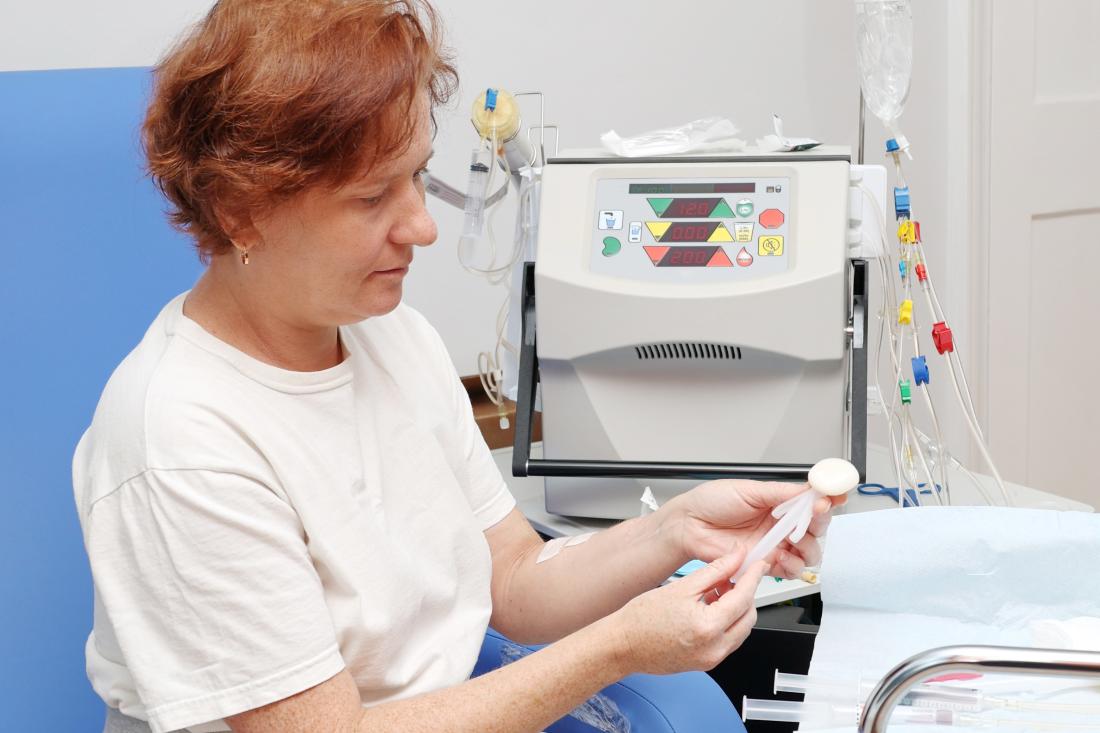Changing Financial Incentives for Medicare Providers to Encourage Home Dialysis in the United States
In an effort to increase the number of patients who receive home dialysis, which is cheaper and believed to be as or more effective as facility-based dialysis, the Center for Medicare and Medicaid Innovation (CMMI) designed a new reimbursement model to incentivize end-stage kidney disease providers and facilities to provide home dialysis, and then randomly assigned parts of the United States to this new model. Researchers analyzed the impact of this new reimbursement model on home dialysis rates. During the first year of the study, there was no statistically significant difference in home dialysis rates between hospital referral regions randomly assigned to the new reimbursement model and those that used the old model.
Policy issue
Dialysis, which can be performed either at home or at a facility, is the most common treatment for end-stage kidney disease (ESKD). Compared to facility-based dialysis, home dialysis is associated with lower costs and equal or better clinical outcomes. Eighty-five percent of ESKD patients are estimated to be eligible for home dialysis. However, as of 2019, only 12.6 percent of ESKD Traditional Medicare patients used home dialysis, which is approximately one-quarter to one-half of the home dialysis rate in other high-income countries. The US Department of Health and Human Services’ goal is to have eighty percent of new ESKD patients participate in home dialysis or receive a kidney transplant by 2025.
The relatively low proportion of home dialysis rates could be, in part, due to financial incentives for Medicare managing clinicians and ESKD facilities that encourage facility-based treatment. This raises the question of whether financial incentives and payment reforms for ESKD managing clinicians and facilities can increase home dialysis rates.
Context of the evaluation
In the United States, Medicare is the federal health insurance program available to people over 65 years old, people younger than 65 who have certain disabilities, and people of any age who have end-stage kidney disease (ESKD). ESKD is the permanent failure of the kidneys that requires dialysis or a kidney transplant.
The Center for Medicare and Medicaid Innovation (CMMI)–a government agency created by Congress in 2010–designed and implemented a new payment model—the End Stage Renal Disease Treatment Choice (ETC) model—meant to incentivize home dialysis for ESKD facilities and managing clinicians. Medicare sets the amount at which Medicare providers are reimbursed, so financial incentives may influence the treatment provided. The ETC program began on January 1, 2021, and its last measurement period ends on June 30, 2026. There are two types of incentives in the program: the Home Dialysis Payment Adjustment (HDPA) and the Performance Payment Adjustment (PPA). HDPA increases reimbursements for home dialysis. PPA increases or decreases reimbursement rates based on whether a facility meets target thresholds for home dialysis and transplant rates. In 2021, HDPA increased reimbursement by 3 percent and PPA changed reimbursement by -5 percent to +4 percent.
Patients in the evaluation were at least 66 years old and initiated treatment in dialysis in 2021. 18,621 patients were eligible for the study in hospital referral regions throughout the United States. The average patient was 75 years old. Most (83 percent) lived in an urban area. Sixty-six percent of patients were white, 58 percent were male, and 18 percent had a disability. Additionally, 25 percent received Medicaid coverage, the government health insurance assistance for which people with low incomes of all ages qualify.

Details of the intervention
CMMI randomly assigned 30 percent of hospital referral regions (HRRs) to participate in the ETC model. Participation was mandatory, with all providers in participating HRRs receiving adjusted payments for dialysis treatment based on ETC. Assignment was determined by stratified randomization of US census regions, which are Northeast, South, Midwest, and West (i.e., within each census region, 30 percent of HRRs were randomly selected for the payment reform model). The researchers explored if the ETC model increased home dialysis rates during the first year of the program, 2021. Their primary outcome of interest was the percent of patients initiating dialysis who received any home dialysis during the first 90 days of their treatment, measured using comprehensive claims data.
Results and policy lessons
During the first year of the new payment model, there was no statistically significant difference between participating HRRs and comparison HRRs in the share of patients receiving any home dialysis during the first ninety days of their treatment. The same was true when researchers examined subsamples by various patient and facility characteristics, such as a patient’s distance to the nearest facility and whether or not the facility was a chain.
In the comparison group, 20.6 percent of the new patients received home dialysis during their first 90 days of treatment; in the treatment group, this share was 0.12 percentage points higher, a statistically nonsignificant difference.
It is possible the lack of impact on home dialysis rates could change in later years of the program, when the size of financial incentives becomes larger. However, provider payment incentives of equal or lesser magnitude in other health care settings have produced statistically significant changes in provider behavior. This raises questions about the efficacy of the ETC model for increasing home dialysis among Medicare ESKD patients. Research on future years of the intervention will help further reveal whether or not ETC is an effective model for increasing home dialysis rates.
Ji, Yunan, Liran Einav, Neale Mahoney, and Amy Finkelstein. "Financial incentives to facilities and clinicians treating patients with end-stage kidney disease and use of home dialysis: a randomized clinical trial." In JAMA Health Forum, vol. 3, no. 10, pp. e223503-e223503. American Medical Association, 2022. DOI: 10.1001/jamahealthforum.2022.3503
